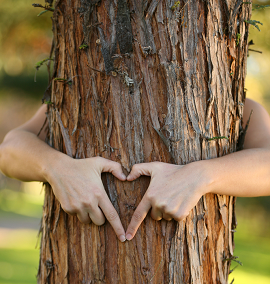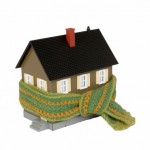
Wood has always been one of our most precious resources. Unfortunately, with over 7 billion of us relying on trees for survival and comfort, managing forests in a renewable fashion can be challenging!
Where and how our hardwood is sourced makes an enormous impact on all of us – economically, politically, and environmentally.
In this day and age, however, loose claims such as “green” and “eco-friendly” carry about as much weigh as the word “healthy” on a loaf of bread at the supermarket.
The truth is, only about 10 percent of Earth’s forests are certified sustainable. With all these unsupported claims of sustainability, how can we tell what’s justifiable?!
Sure, we all want to invest in wood that comes from a reliable, sustainable source, but tracking a sapling all the way to your dining room floor is not an easy task! Whether you are laying down new hardwood floors for your home or simply building a spice rack, here are a few tips for breaking apart the jargon.
Sustainability certifications: what does this mean?
Energy efficiency, air quality, water/wildlife conservation, and renewable logging practices are just a few of the factors to take into account when considering such certifications. Most sustainability labels are based on the life cycle of the trees from which the wood came, and they help ensure the long-term health of a forest. Lumber with no such label carries no guarantee of sustainability! Check out the label, do a bit of research, and decide if you are indeed investing in an eco-friendly product.
A chain-of-custody (COD) label is a reliable way to trace the origins of your wood. This certification tracks every piece of lumber back to the company that harvested it, ensuring that it did indeed come from a sustainable forest.
Labels to consider
The Forest Stewardship Council (FSC) is an international, non-profit organization that strives to promote sustainable management of forests all over the world. The group is divided into three chambers that tend to the social, economic and environmental well-being of forests. An FSC certification guarantees that the wood came from a sustainably-managed forest, rather than an endangered or environmentally-destructive region.
The FSC certification also protects wildlife and water quality by prohibiting the use of atrazine and other dangerous chemicals. The organization protects old-growth forests from destruction, as well as natural forest cover that is oftentimes obliterated in short-term lumber harvesting operations.
The Sustainable Forestry Initiative (SFI) is another non-profit group that oversees over 240 million acres throughout Canada and the US. Like the FSC, the SFI is organized into a three-chamber board that encourages sustainable forest management, energy efficiency and water/wildlife protection across the region. Lumber with an SFI label ensures certified sourcing from such forests.
Lumber companies that have achieved this certification have essentially passed the standards required by the SFI – standards that strive to prevent soil erosion, protect existing habitats and harvest lumber in ways that encourage the long-term vitality of a forest.
Take a deep breath
As you read this, trees all over the world are working their trunks off to produce the oxygen in our lungs. Humans have relied on trees for tens of thousands of years, and with 7 billion of us crammed on this rock together, it’s time we treated our forests with the respect they deserve.
Harvesting lumber does not have to be environmentally destructive – by doing a little bit of research, and making a few eco-conscious decisions, the hardwood in our homes can be as renewable a resource as the air we breathe.
AUTHOR: Angelo DiGangi is an “on the floor” store associate at a Home Depot in the Chicago suburbs. He is a regular contributor on DIY hardwood flooring for Home Depot’s website.
 A Road to More Natural and Sustainable Materials to Build Home Patios
A Road to More Natural and Sustainable Materials to Build Home Patios Can Renting a Hybrid be a Much Better Deal than Driving Your Own Car?
Can Renting a Hybrid be a Much Better Deal than Driving Your Own Car? 9 Smart Ways to Winterize Your Home for Comfort and Savings
9 Smart Ways to Winterize Your Home for Comfort and Savings